The Covid Diaries 74 – William Morris Gallery incl. Within The Reach Of All: The Century Guild
A review of the William Morris Gallery in Walthamstow, including temporary exhibition Within the Reach of All: The Century Guild. In which I am wildly enthusiastic about William Morris, and enjoy a turn at running Morris & Co.
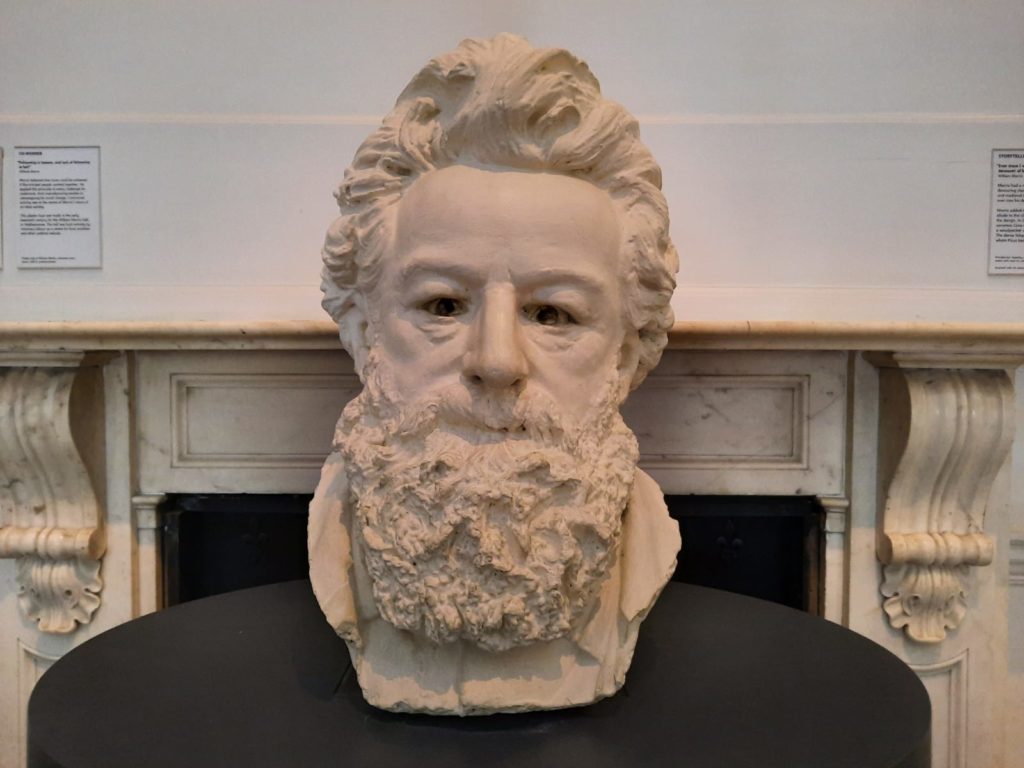
The William Morris Gallery, Walthamstow’s Main Draw (For Me At Least)
A disclaimer at the outset: I really like William Morris. I like his passion, his larger than life personality, and his creations. So there was little chance I was not going to enjoy this repeat visit to the William Morris Gallery in Walthamstow. I think the blog and I were taking a break the last time I came here, so this is your first time reading about it.
The William Morris Gallery opened in 1950, and had a major redevelopment in 2012. The Gallery occupies Water House, a 1740s Georgian house in Walthamstow (which at that time was a leafy village in Essex). ‘Water’ comes from a moat which has existed near the house for centuries – a great place for a young William to play at being a knight. It was home to the wealthy Morris family from 1848 (when William was 14) to 1856. The publisher Edward Lloyd was the next resident. His son donated the house to Walthamstow Council provided the council bought additional land and opened a park. Lloyd Park duly opened in 1900.
The William Morris Gallery covers Morris’s life, work and legacy. There is a space for temporary exhibitions, a cafe and a shop. Its proximity to Lloyd Park and the fact that entry is free make it a great community asset. Read on to find out more about what’s on display, including a temporary exhibition.
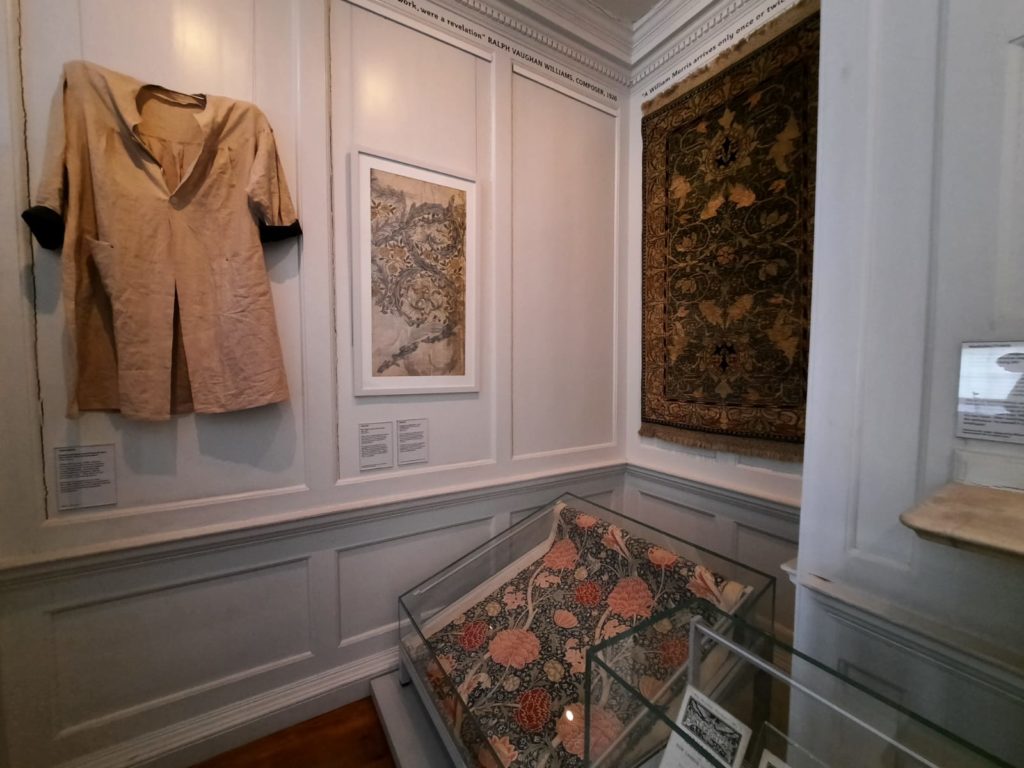
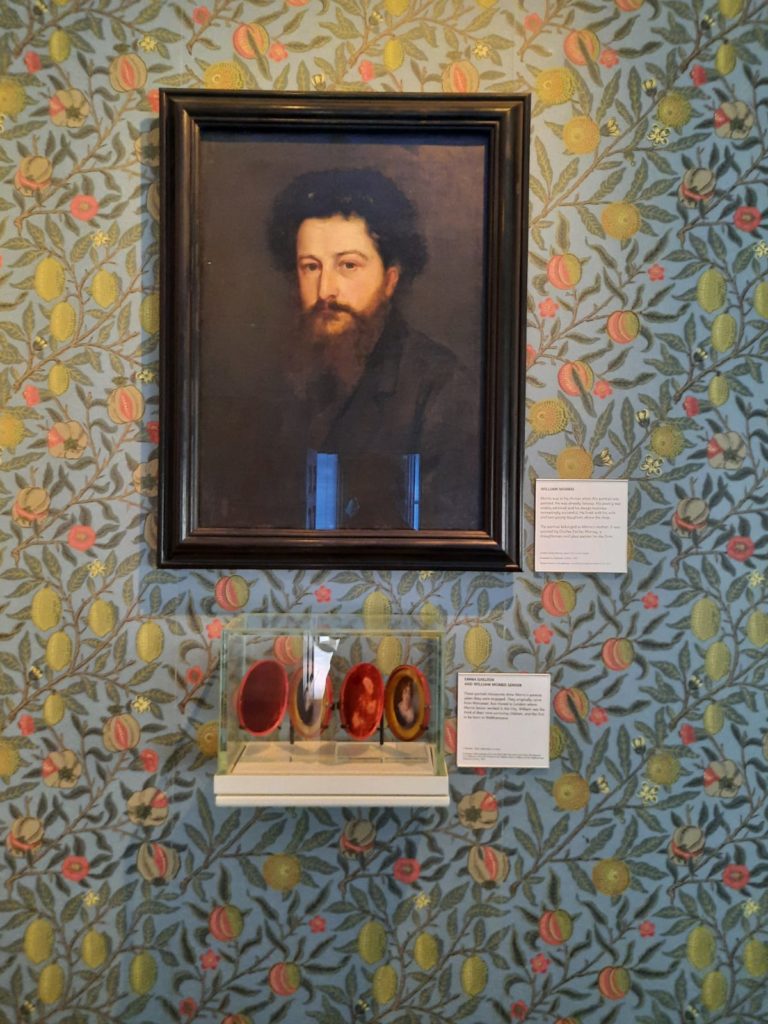
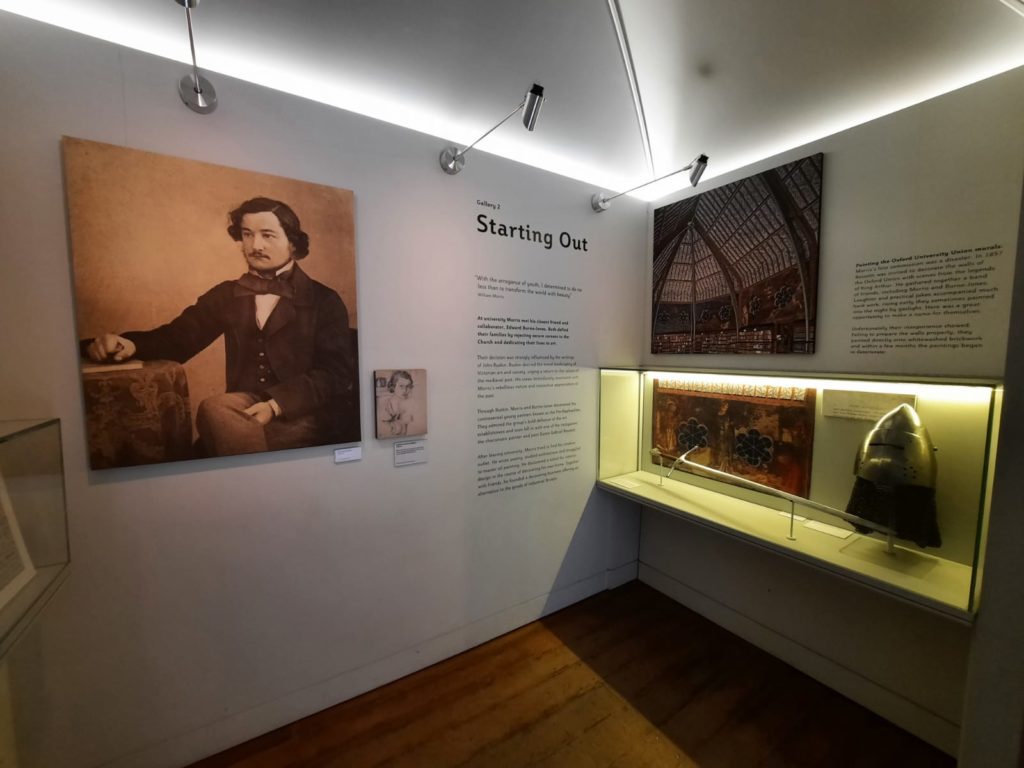
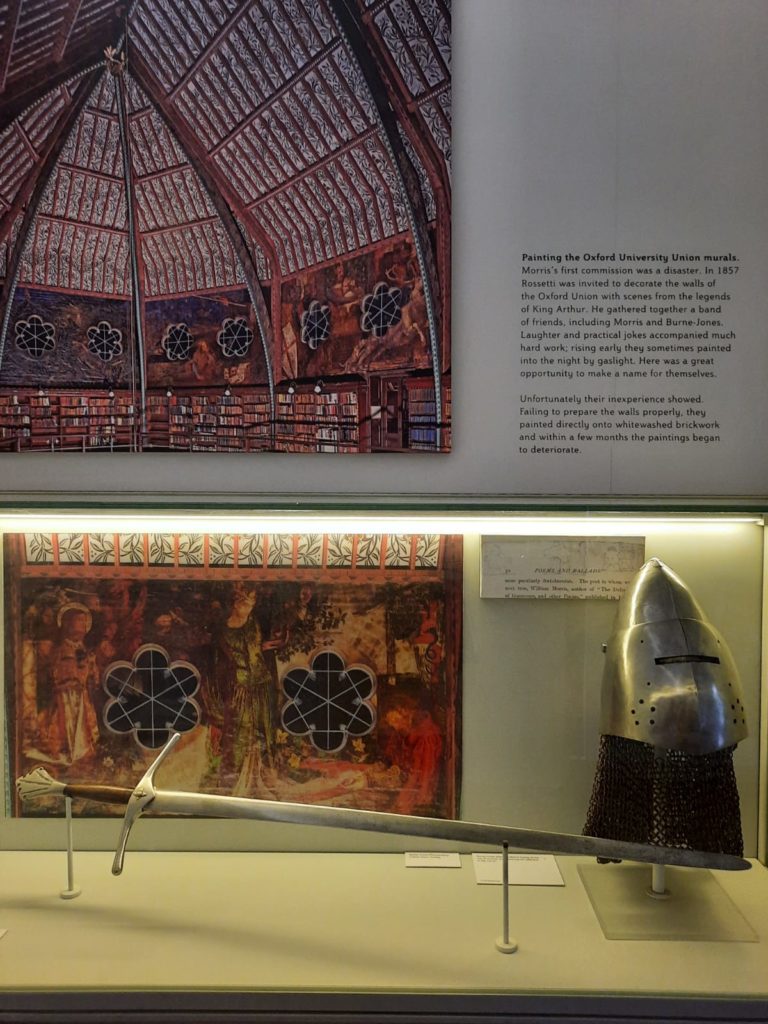
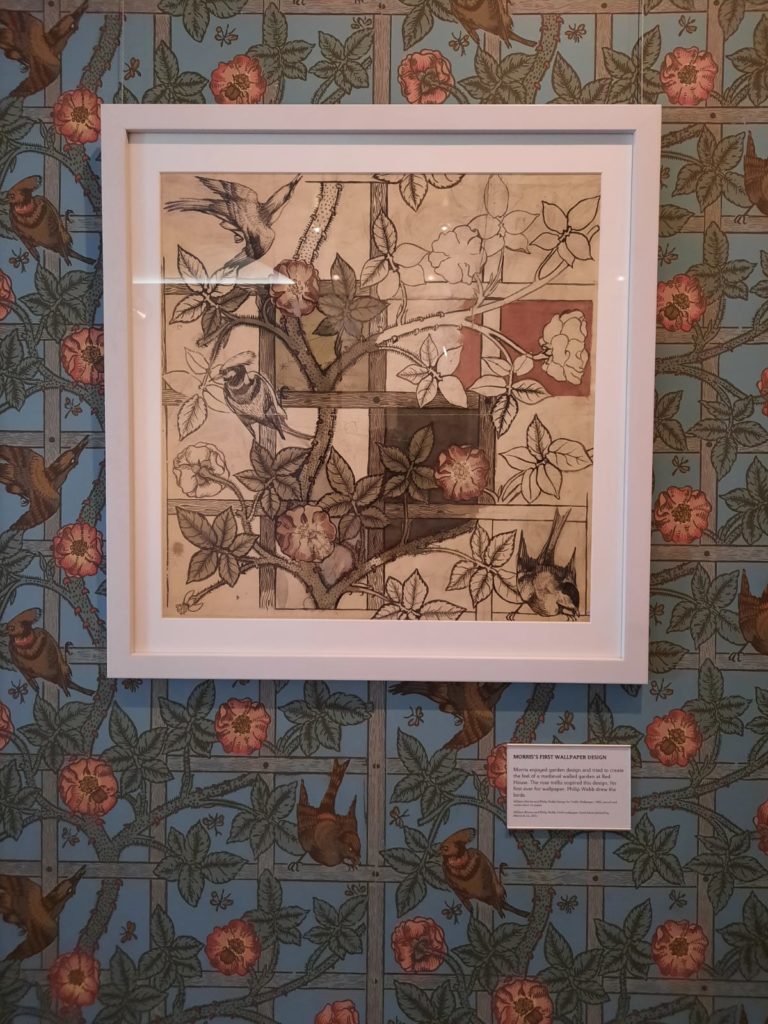
A Pre-Raphaelite Renaissance Man
Right at the outset, the William Morris Gallery demonstrates excellently just how many strings Morris had to his bow. They present him as a craftsman, designer, retailer, manufacturer, co-worker, socialist, storyteller, writer, printer, and colourist. A real Renaissance man. As a Pre-Raphaelite, however, I’m sure he would have spurned this title. From his youth you get a glimpse of the man he would become. He loved reading and adventure. His class at boarding school literally ran riot. And although his family had him earmarked for the church, he had other ideas.
Mostly this quality that I admire could be described as a larger than life personality. But reading through some of Morris’s early exploits, it also struck me that he really made his name thanks to the confidence of wealth and youth. The Morris family were certainly well-off. Even after his father’s unexpected death, they lived comfortably. In my experience this background can bring with it a bravado that opens doors. Would a less confident group of young men have decided they were up for the challenge of decorating the Oxford Union with Arthurian scenes? It was a disaster by the way because they didn’t know what they were doing… But it did bring Morris into contact with Jane Burden, who he fell in love with and later married.
This transgression of social boundaries (Burden hailed from a poor Oxford family) was another consistent theme in Morris’s life. He happily worked alongside the craftsmen he employed. He had no qualms about serving customers in his shop. And in later decades he was a committed socialist, speaking and marching frequently. He lived a full life, and what we would call today an authentic one. But the William Morris Gallery is not just about the man himself of course, but the work and legacy of Morris & Co. as well.
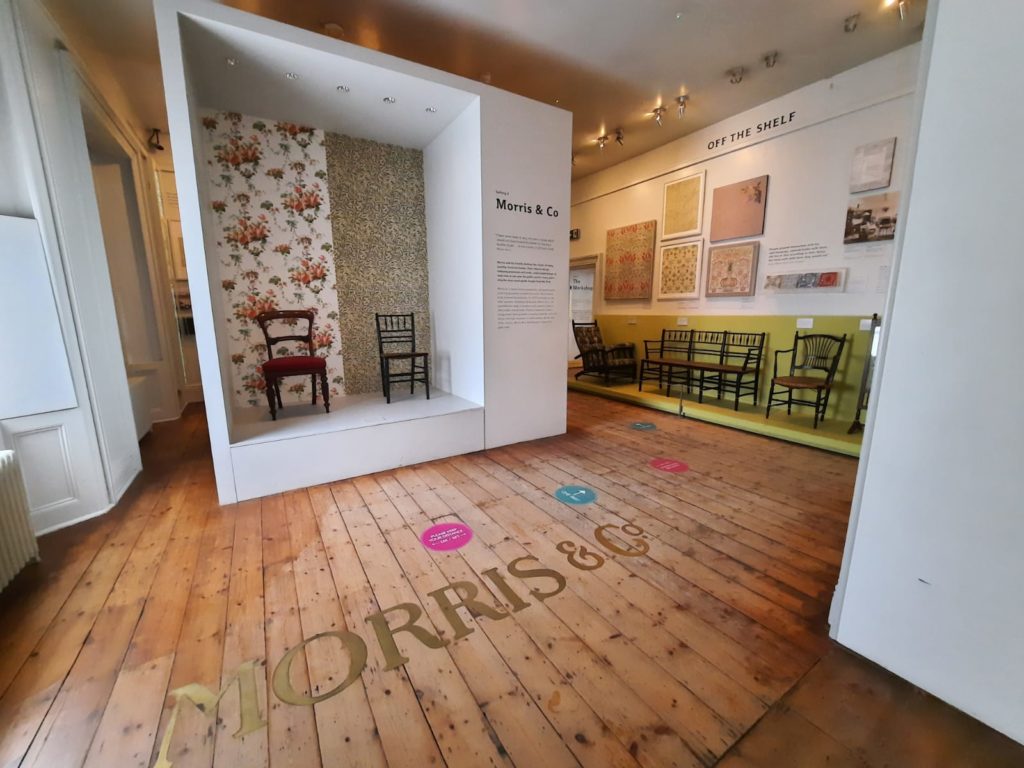
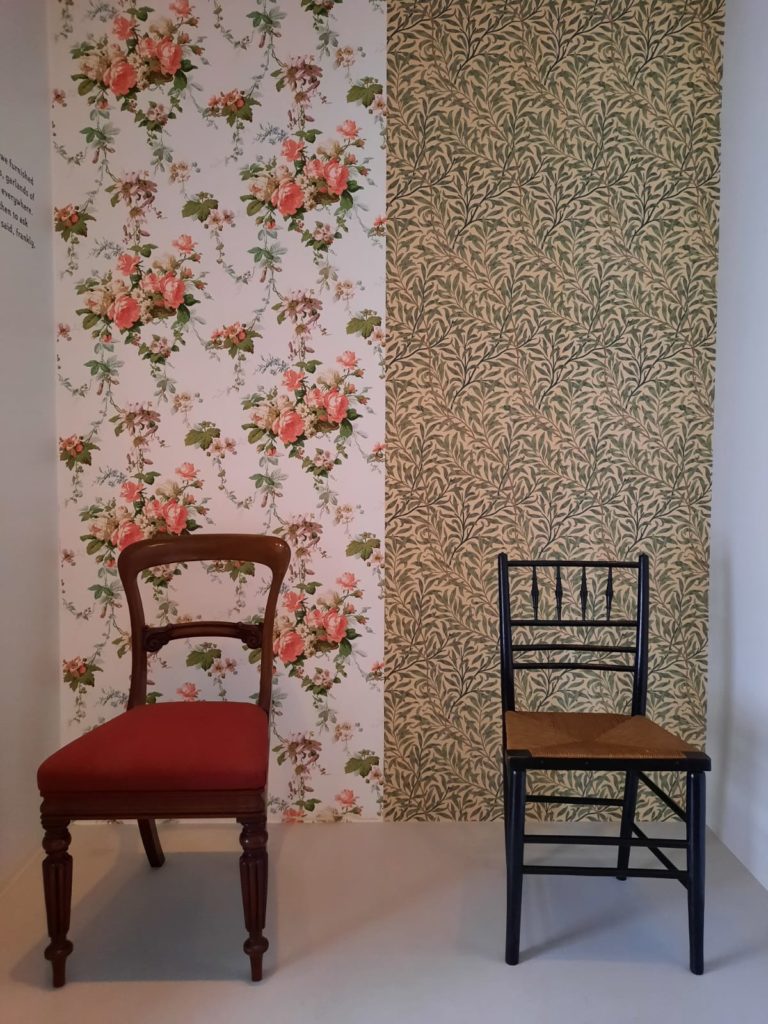
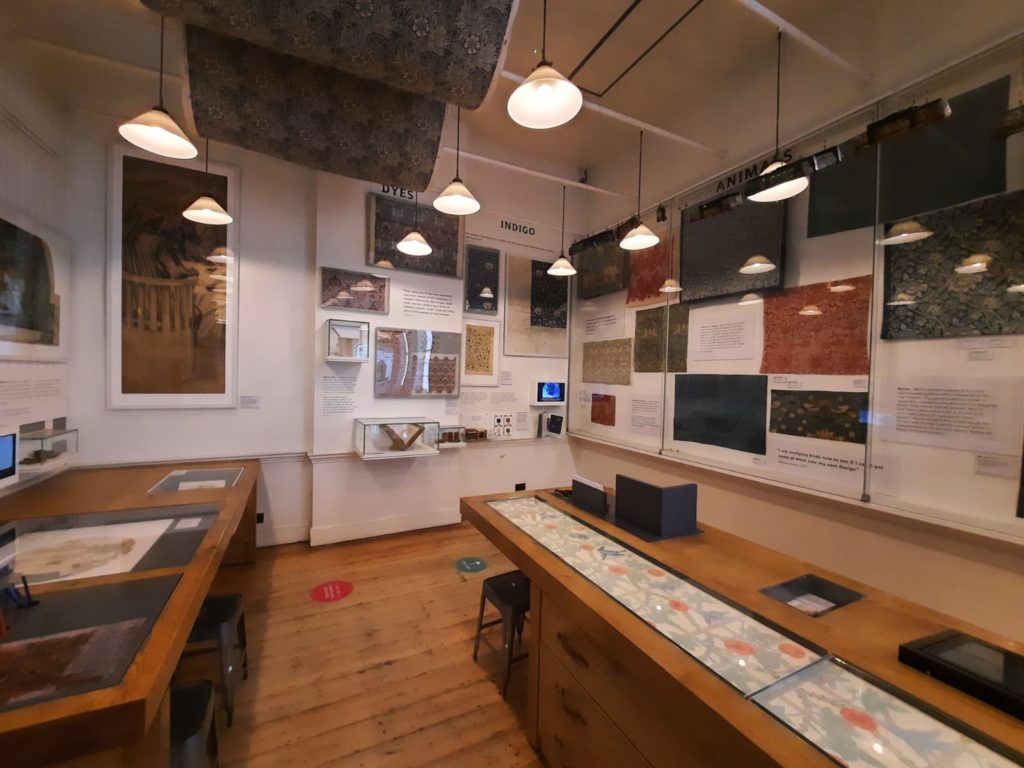
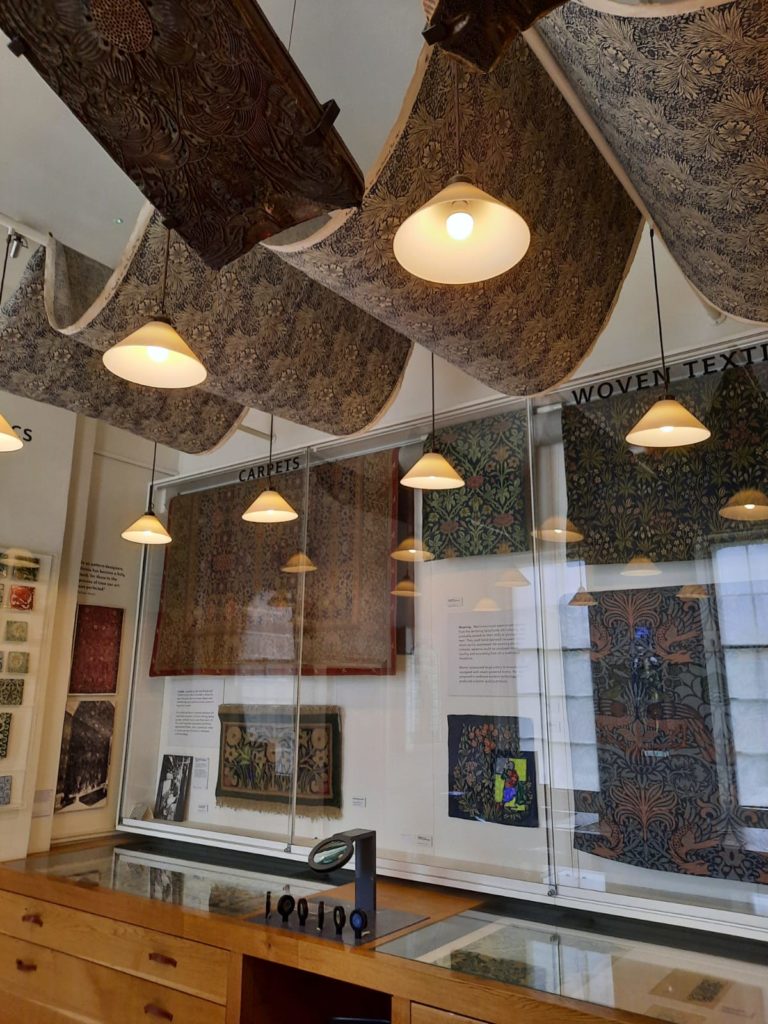
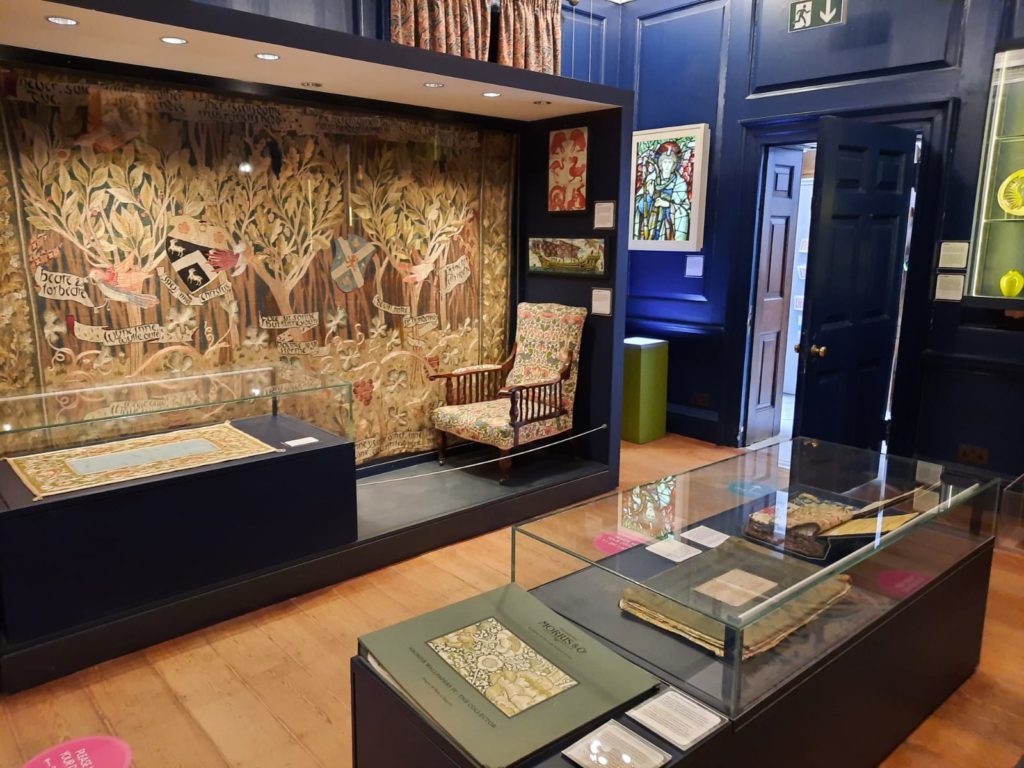
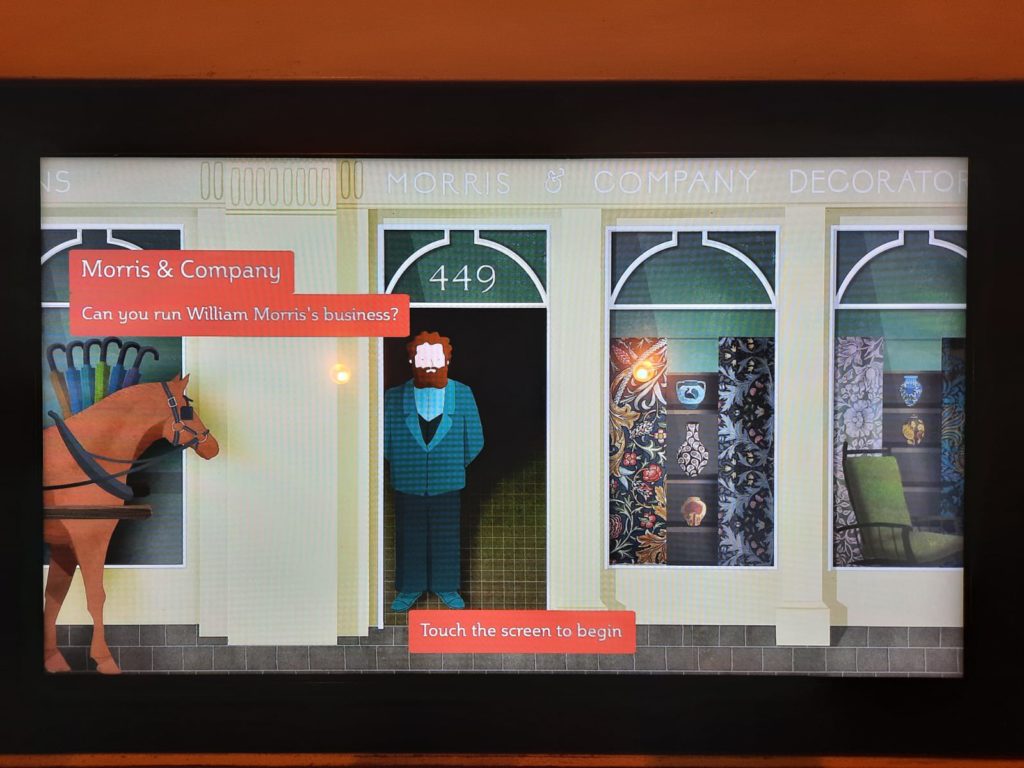
Lasting Legacy On Design
The remainder of the ground floor surveys William Morris’s work and the firm of Morris & Co., from concept to manufacture and retail. Morris & Co. began life as Morris, Marshall, Faulkner & Co. They despised the mass-produced and overly decorated Victorian style, and instead wanted to look back in time to simpler forms and quality craftsmanship. See the second image above for a side by side comparison. Their wares included fabrics, wallpapers, tiles, homewares, stained glass, tapestries and more. Some techniques had fallen out of use, so Morris would figure them out before teaching them to his craftsmen.
The great irony of this whole endeavour is that Morris wanted to bring these quality objects to everyone, but they were out of the price range of most people. There’s quite a fun interactive game in this section which teaches you more. You run Morris & Co. for four years, and have to decide which designers to engage, how much to spend on traditional manufacturing techniques, and where to set the price point. Not easy to bring hand craftsmanship to the masses while upholding your brand image.
There’s really a huge amount of information here, so visitors can dip into the topics that interest them. There is also a room which recreates elements of Morris & Co’s Oxford Street shop. It gives an idea of how Morris retailed the products and shows the range of goods available. Morris’s Arts & Crafts designs are what we remember him for today, and the Gallery does an excellent job at introducing visitors into this vision and legacy in just a few rooms.
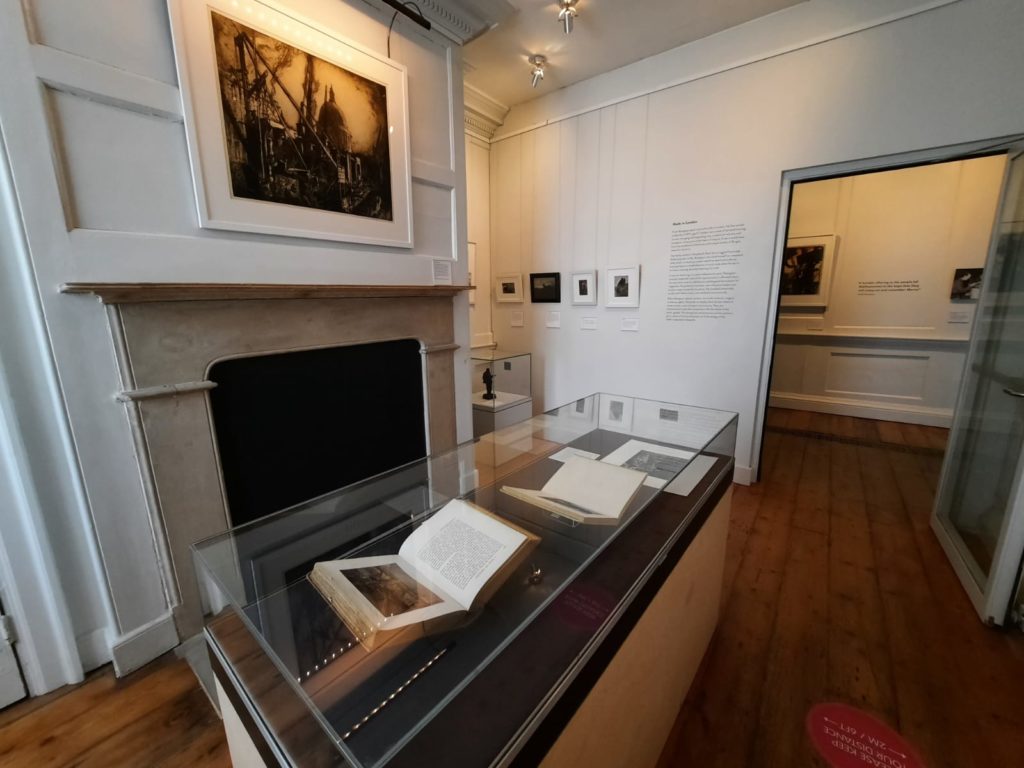
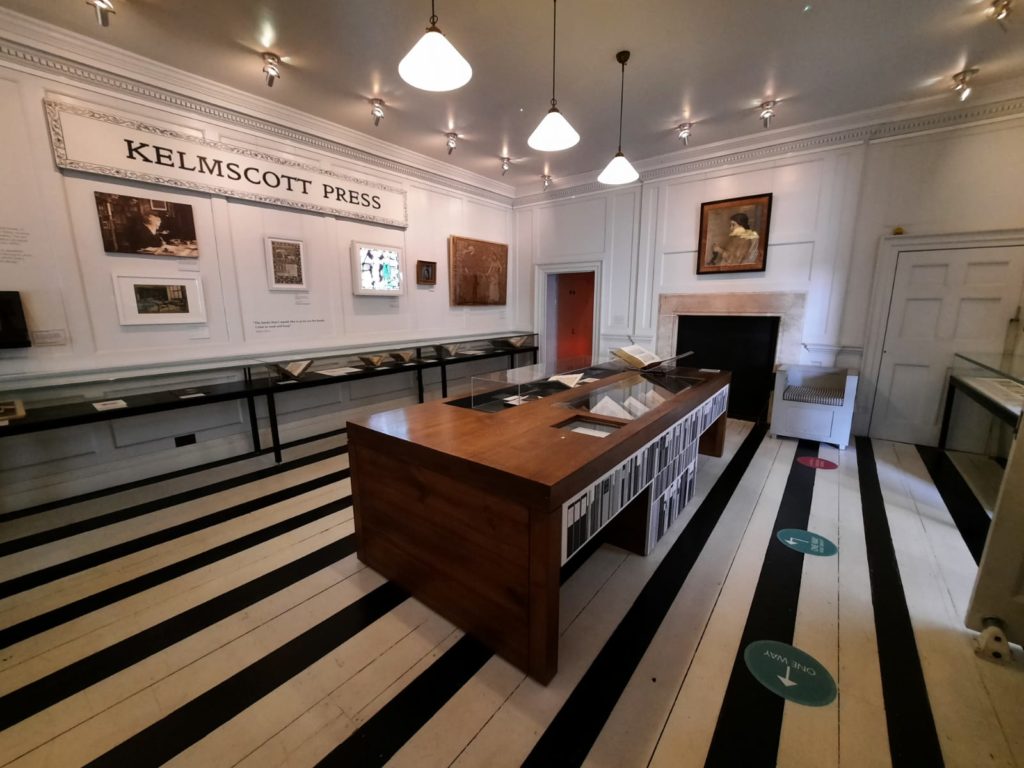
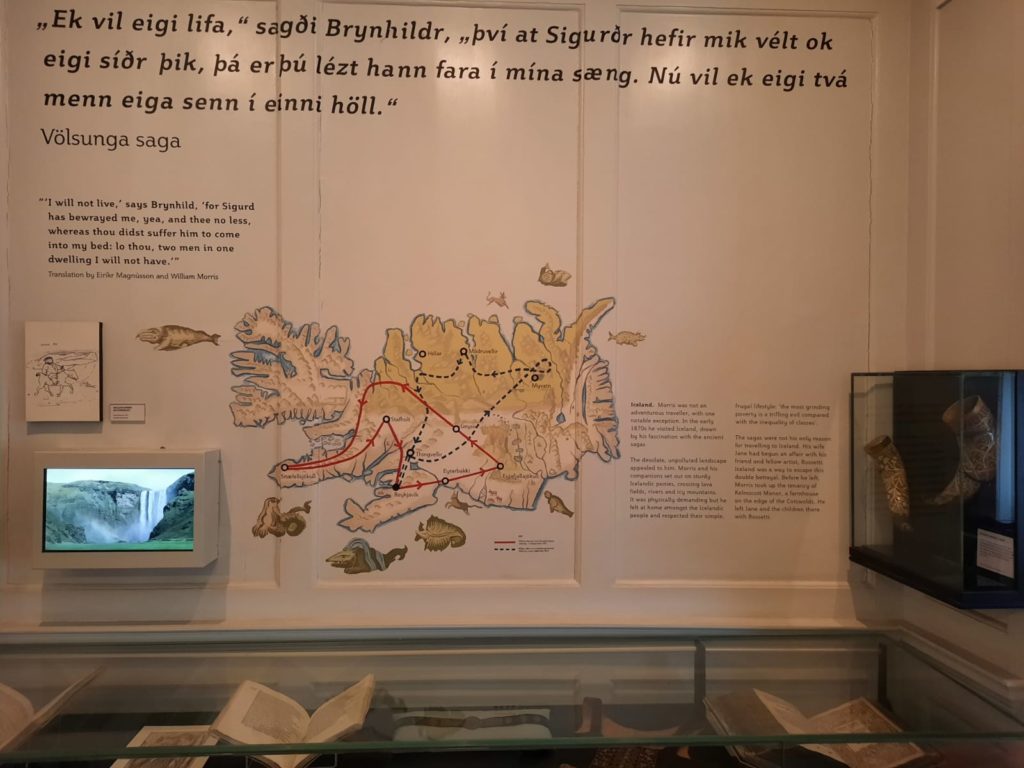
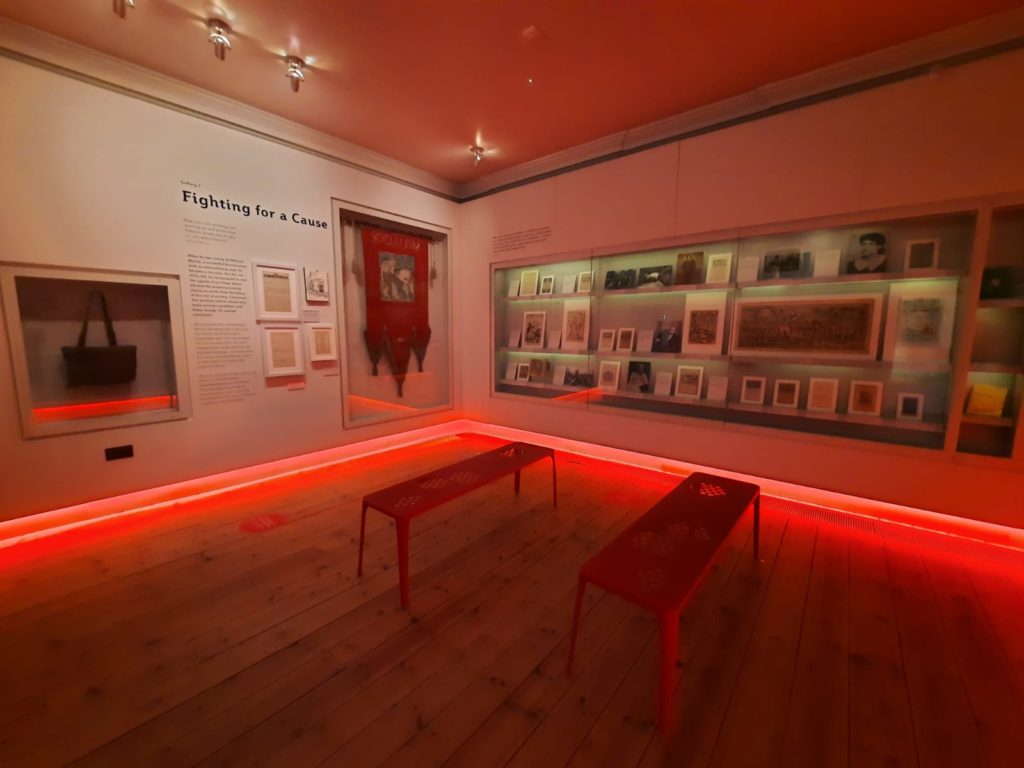
William Morris: Literary Works & Socialist Activism
Upstairs at the William Morris Gallery there are further permanent collection displays. These deal with Morris’s literary achievements and his socialist beliefs. There is also a room of works by Frank Brangwyn, who made a large donation of art to the Gallery in the mid-20th Century.
In his own time, Morris was best known as a poet. He published a well-received epic poem entitled The Earthly Paradise in 1868. He was also fascinated by Icelandic sagas, even travelling twice to Iceland (and getting about on a little pony). Morris wrote several works inspired by these tales – I have read a few and can say that some are harder going than others. Victorian printing standards were (of course) one of the things Morris despised, so he set up his own private press, Kelmscott Press. It wasn’t a huge financial success, but had a lasting impact on the art of printing.
Morris was also a committed socialist. Biographies often portray this as something to throw himself into as Jane was having an affair with Dante Gabriel Rossetti, but there is no doubt that his beliefs were very firmly held. He used his fame to draw audiences for talks, and a very charming exhibit in the Gallery is the simple satchel he used for his notes and pamphlets. For such a complex man, the William Morris Gallery does an excellent job of bringing all of his various aspects to life. Let me now finish this section with a couple of my favourite quotes from the Gallery:
“If a chap can’t compose an epic poem while he’s weaving a tapestry, he had better shut up, he’ll never do any good at all.”
William Morris
“…yesterday morning Morris praised [a client] so loudly in my studio that he shook my canvas and made me draw waggly lines.”
Edward Coley Burne-Jones, Morris’s Lifelong Friend
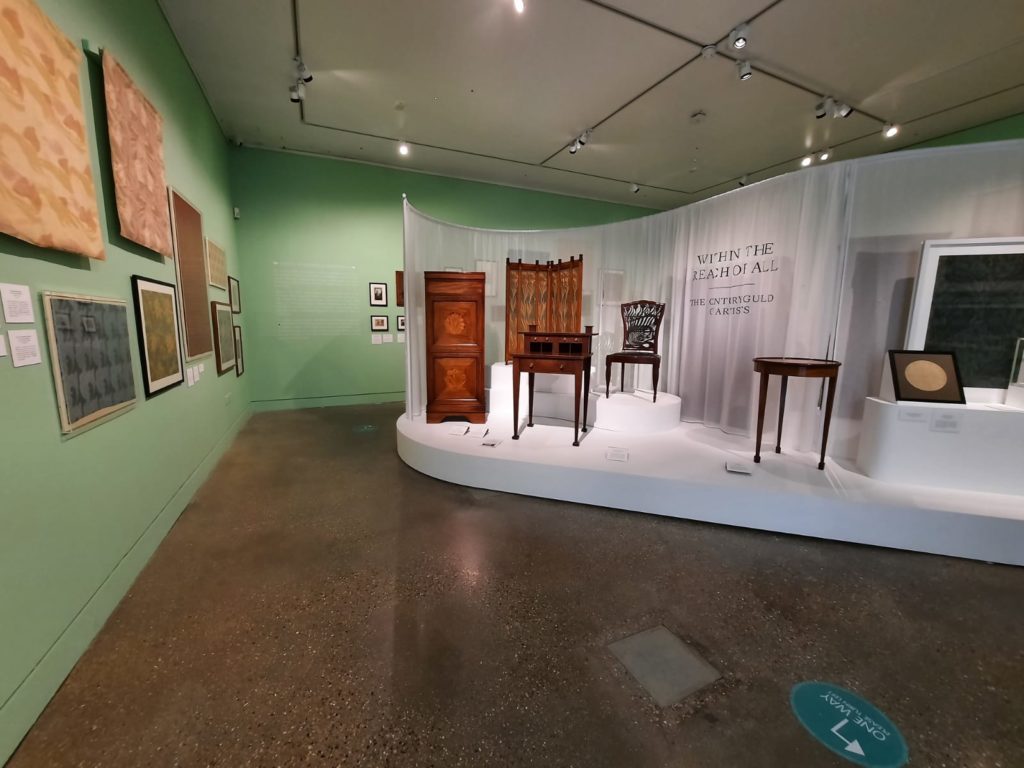
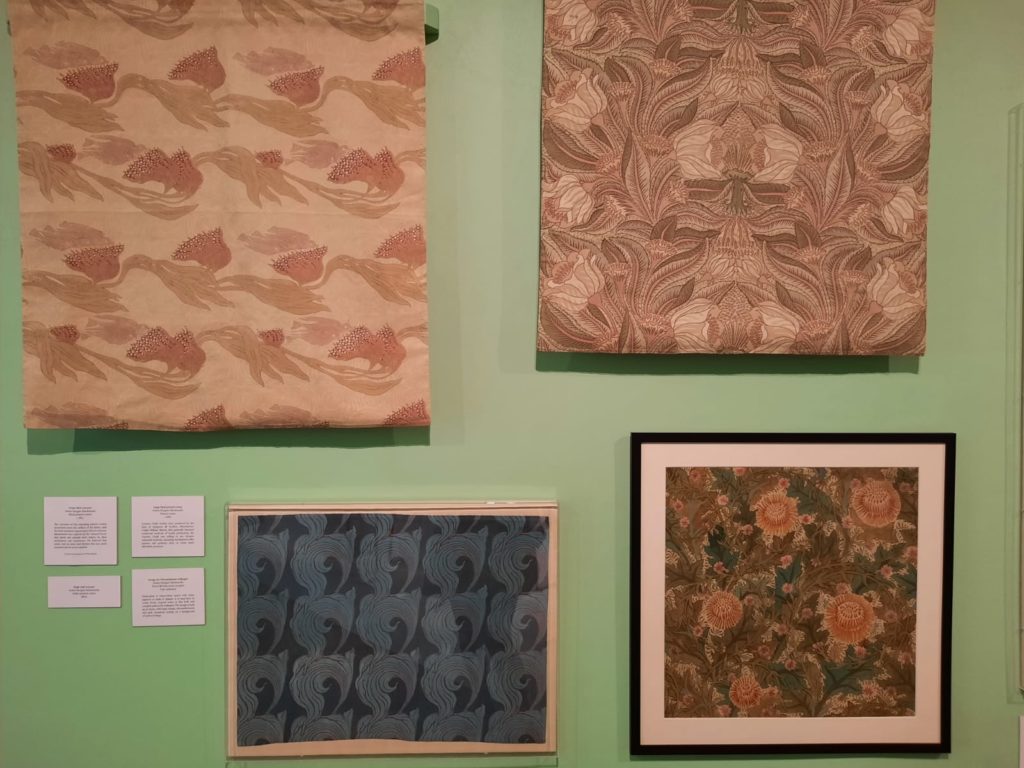
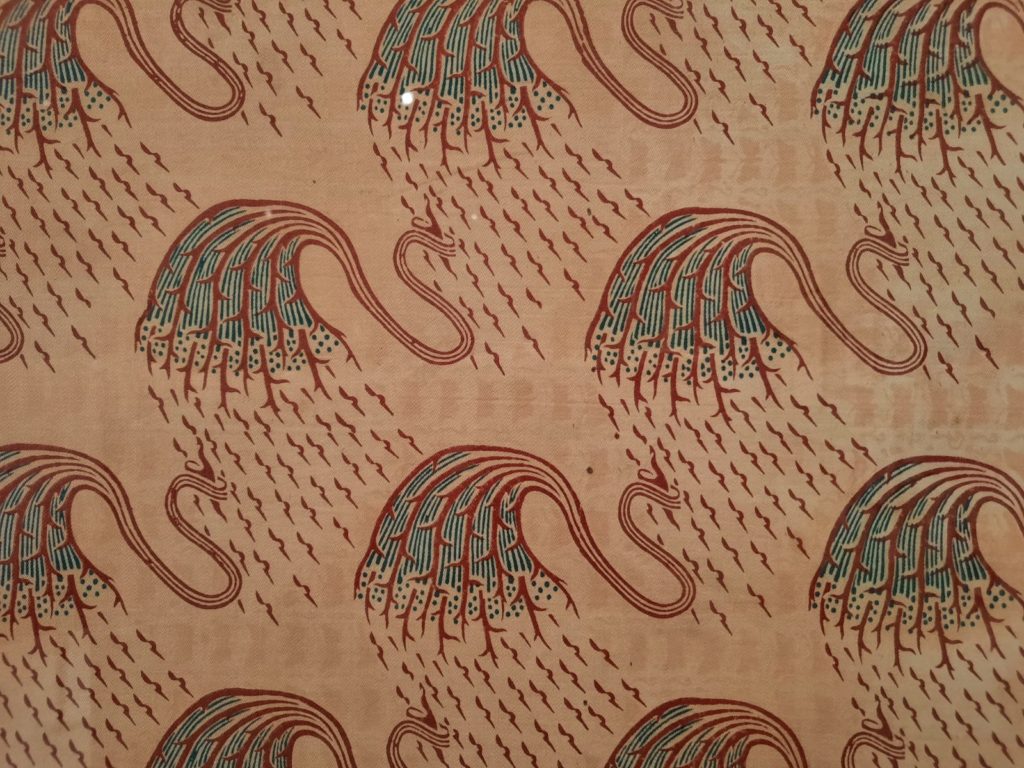
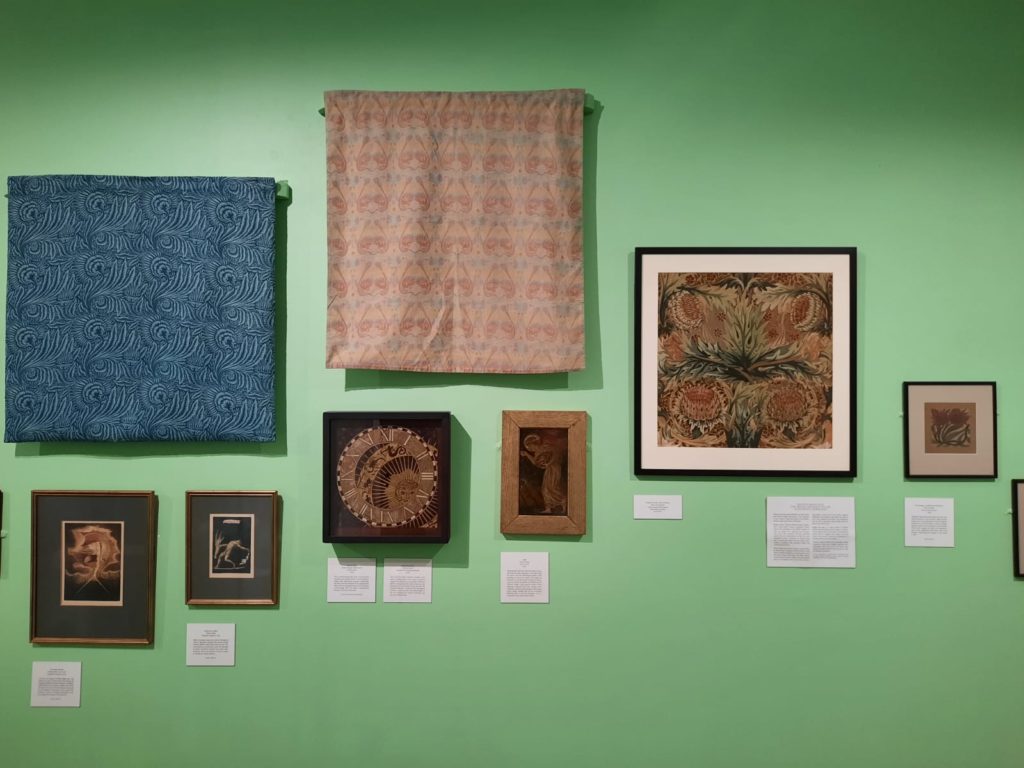
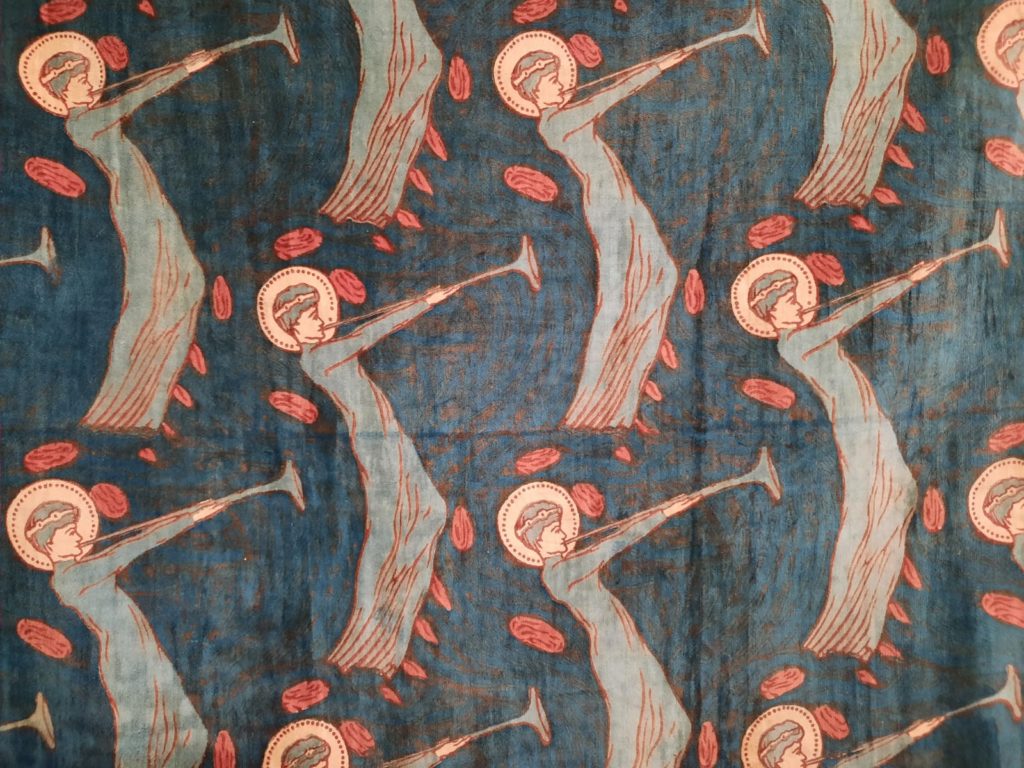
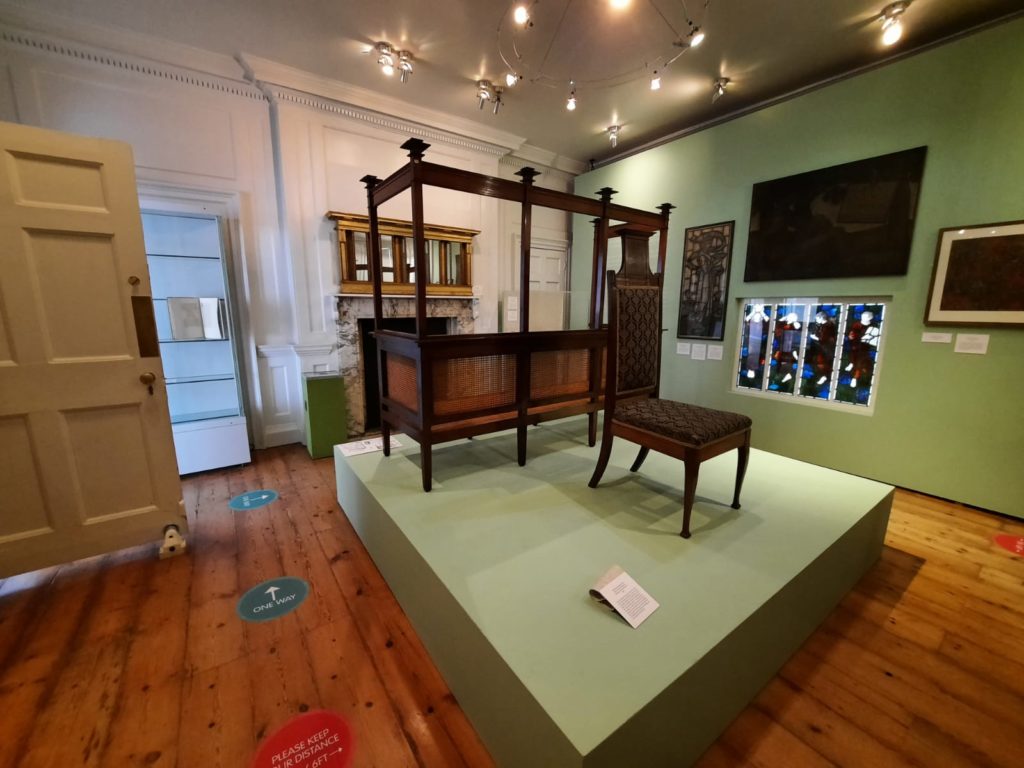
Within The Reach Of All: The Century Guild
One of the William Morris Gallery’s current temporary exhibitions (more have opened since my visit) is Within the Reach of All: The Century Guild. This exhibition focuses on the collective of designers, artists and craftspeople known as the Century Guild. The ‘guild’ part of the equation hearkens back to medieval trade guilds. The ‘century’, interestingly, doesn’t refer to time but to a medieval chivalric usage of ‘sentry’. So far, so similar to William Morris. Where the Century Guild differed, however, was in being a bit less particular about manufacturing in order to achieve their vision of democratising good design.
The Century Guild was founded by architects Arthur Heygate Mackmurdo and Herbert Horne, in 1882. Selwyn Image, a former priest, later joined them. Their sinuous aesthetic was a forerunner of art nouveau, and they had a diverse range of products just like Morris & Co., including fabrics, furniture, stained glass and wallpaper. They also published a periodical, Hobby Horse, which was probably their most influential output in the long term.
Arthur Mackmurdo, like Frank Brangwyn, was an early supporter of (and donator to) the William Morris Gallery. So this exhibition comes large from the Gallery’s own collection. It’s relatively small – one room downstairs and one room upstairs – but gives a good sense of the Century Guild aesthetic. I found it interesting, but for me the permanent galleries and material on Morris were more interesting. Still, it’s worth a look if you’re there.
On Its Own Merits: 4.5/5
Within The Reach Of All: The Century Guild: 2.5/5
Implementing Covid rules: 4/5
Within The Reach Of All: The Century Guild on until 31 August 2021
Read about more London museums and exhibitions – sign up below for our weekly newsletter:
If you see this after your page is loaded completely, leafletJS files are missing.

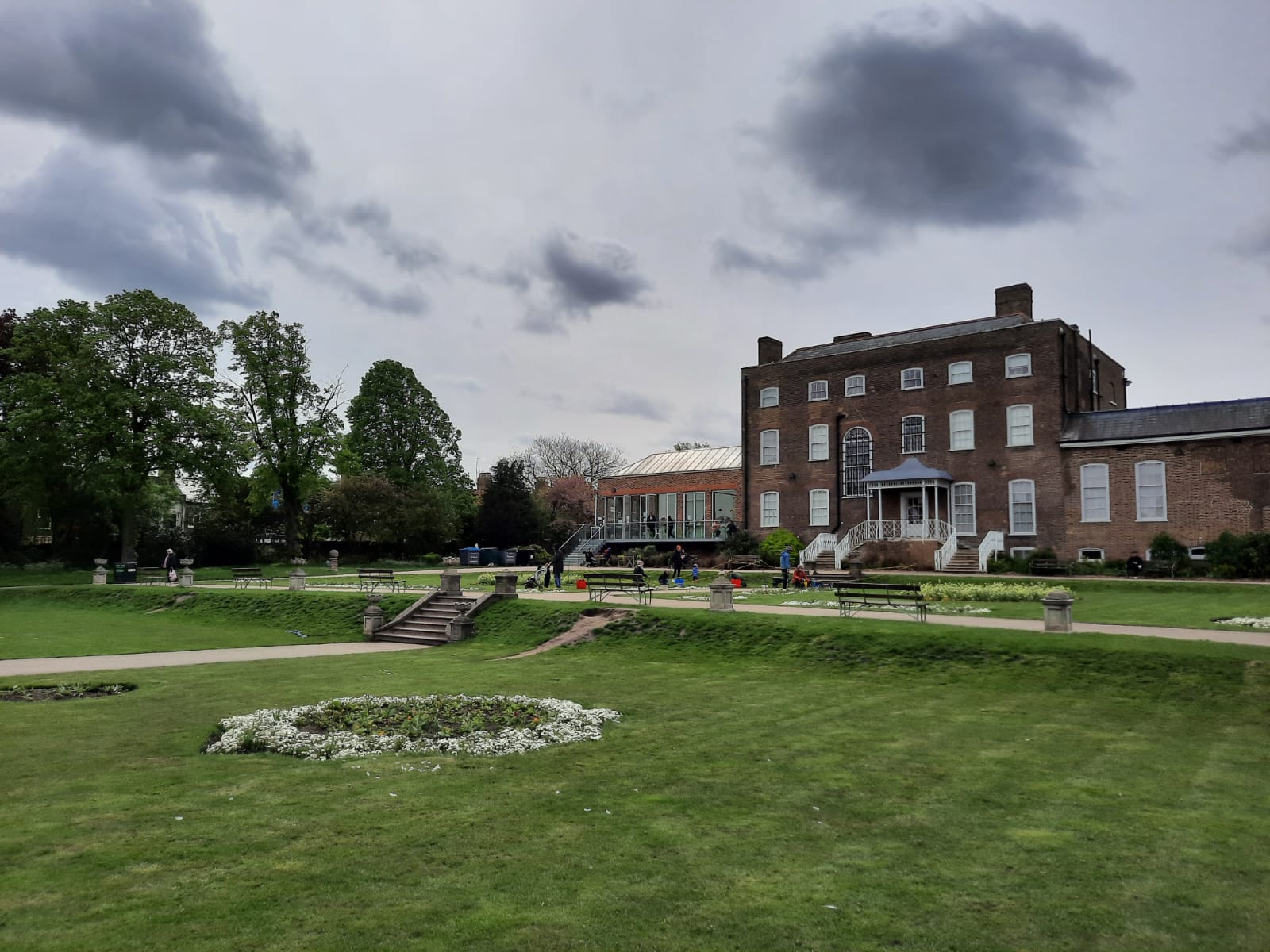
2 thoughts on “The Covid Diaries 74 – William Morris Gallery incl. Within The Reach Of All: The Century Guild”